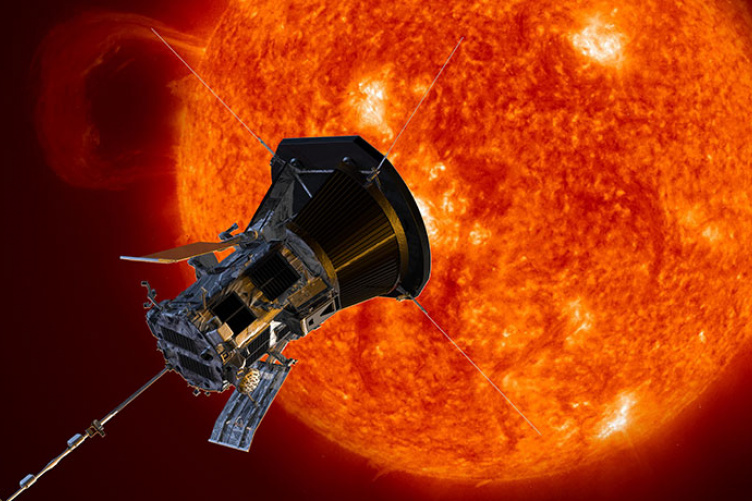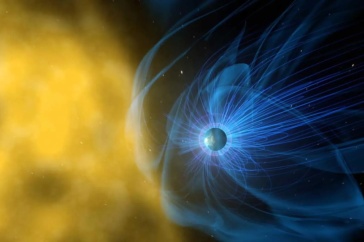
Illustration of NASA's Parker Solar Probe as it approaches the sun. Photo: JHU-APL
We have lift-off: In a spectacular display of rocket launch flames, a spacecraft destined for the sun blasted off into space and took with it the hopes of UNH researchers who are dedicated to the success of this historic mission to study our nearest star.
The recent launch of NASA's Parker Solar Probe from Florida’s Cape Canaveral Air Force Station marks the beginning of a seven-year mission to learn more about the sun and solar wind — the energetic particles it creates that can pose hazards for astronauts and interfere with satellites and other space infrastructure. The probe will fly to within 4 million miles of the sun’s surface — closer than any previous spacecraft has flown — and will face formidable heat in the corona (the sun’s atmosphere) to help scientists to improve the forecasts for space weather that affect our life on Earth.

“It’s a mission that’s been in the works since the dawn of the Space Age, and it’s something I’ve been involved in throughout my entire career,” explains Nathan Schwadron, UNH professor of physics. Numerous UNH faculty, research scientists, current undergraduates and recent alumni have been part of the mission in various capacities and many will remain involved as the probe moves ever closer to the sun.
Schwadron is working with the Princeton University-led integrated science investigation of the sun team to detect and measure high-energy particles coming from the sun. Two of the onboard Energetic Particle Instruments — dubbed EPI-Hi and EPI-Lo — were designed based on previous missions with which UNH was involved. Schwadron calls this “instrument heritage,” in which the most successful parts of previous missions like IBEX, STEREO, Voyager and the Van Allen Probes have provided valuable input for the design of the Parker Solar Probe instruments and for the land-based centers where the data is sent.
"The Parker Solar Probe is going to revolutionize our understanding of the solar wind and how the sun impacts Earth's near-space environment."
For the next seven years, UNH will serve as the science operations center for EPI-Hi and EPI-Lo to ensure the raw data is recorded properly and then processed into usable data, explains Jonathan Niehof, a research scientist at the UNH Space Science Center.
Another question scientists hope to answer with this mission: Why is it hotter in the corona than on the surface of the sun? “It’s like walking away from a fireplace and getting warmer the further away you move from the heat source,” Niehof says.
In all, there are five major scientific investigations taking place with this mission. UNH professor of physics Benjamin Chandran assisted with the FIELDS experiment, which focuses on magnetic fields, electric fields, and waves and is led by the University of California – Berkeley.
"The Parker Solar Probe is going to revolutionize our understanding of the solar wind and how the sun impacts Earth's near-space environment," Chandran says. "It's an incredibly exciting time for space physics."
The probe was named after famed American solar astrophysicist Eugene N. Parker who proposed theories about the solar wind in the late 1950s. This is the first NASA mission to be named after a living individual.
NASA leads the overall mission management and the Johns Hopkins Applied Physics Laboratory is in charge of the probe’s project management.
-
Written By:
Rebecca Irelan | Institute for the Study of Earth, Oceans, and Space | rebecca.irelan@unh.edu | 603-862-0990

















































